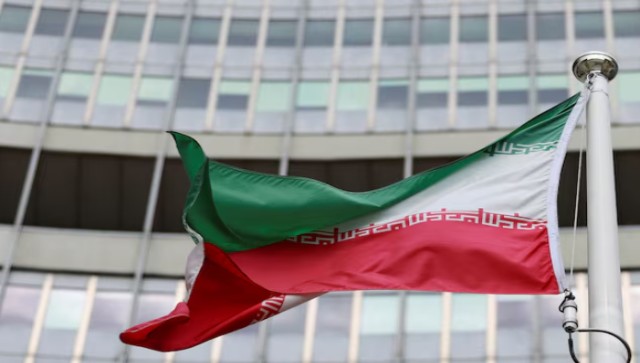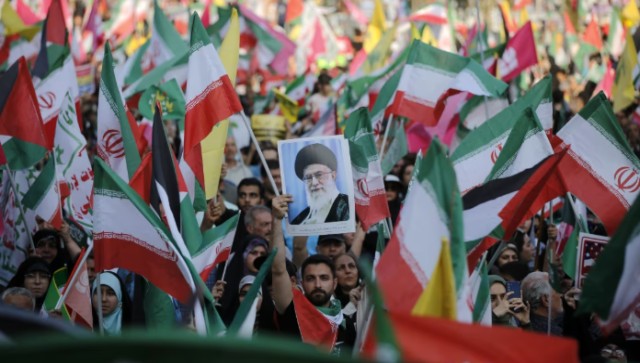
In early June, the Navy's aircraft carrier formation conducted training in the Western Pacific. The picture shows the Shandong aircraft carrier launching carrier-based fighter jets.
China is stepping up its naval ambitions. For the first time, two Chinese aircraft carrier strike groups have operated deep into the open Pacific, signaling a significant shift in Beijing’s maritime strategy. Over the past month, the People’s Liberation Army Navy (PLAN) has deployed three aircraft carriers in key strategic waters, showcasing a new level of capability and intent.
Fujian Sea Trials Mark a Historic Milestone
The Fujian, China’s most advanced aircraft carrier, made headlines by conducting its first aircraft take-off and landing operations at sea. These trials used the cutting-edge electromagnetic catapult system (EMALS), previously exclusive to the U.S. Navy’s USS Gerald R. Ford.
The sea trials occurred in disputed waters west of the Korean Peninsula, marking a significant step in the Chinese navy's ability to project power far beyond its coasts. This move demonstrates China’s determination to modernize its fleet and enhance its global reach.
Twin Carrier Exercises Highlight Growing Strength
Simultaneously, China’s older carriers—Liaoning and Shandong—engaged in military drills in the Pacific. The Liaoning operated near Japan’s exclusive economic zone, while Shandong conducted exercises southeast of Miyako Island in Okinawa. This marked the first time that two PLAN carrier strike groups drilled together in the open Pacific.
These exercises took place in a zone critical to Taiwan’s defense. Experts believe they are designed to demonstrate China’s readiness to disrupt any future U.S. naval support for Taiwan, should a conflict arise. President Xi Jinping has not ruled out using force to achieve “reunification” with the island.
Rising Power Projection Along the First Island Chain
China’s expanding naval footprint is especially visible along the strategic "first island chain"—stretching from Japan through Taiwan and the Philippines to Indonesia. A Taiwanese official reported that approximately 70 Chinese warships and coast guard vessels were deployed across these waters throughout May.
Tensions remain high around the Japanese-controlled Senkaku Islands (Diaoyus in China), where Chinese ships have been present nearly every month for two years. Meanwhile, confrontations with Philippine forces in the South China Sea continue as China pushes to assert sovereignty over this vital trade route.
U.S. Defense Officials Warn Against China’s Coercive Tactics
At the Shangri-La Dialogue in Singapore, U.S. Defense Secretary Pete Hegseth condemned Beijing’s aggressive moves. He stated that any coercive attempt to alter the status quo in the South China Sea and first island chain is “unacceptable.”
Hegseth also highlighted the PLA’s growing presence around Taiwan and criticized its harassment of regional nations. According to him, China is clearly preparing to use military force to shift the balance of power in the Indo-Pacific.
Chinese Navy Now Operating Beyond the Second Island Chain
Japan has confirmed that PLAN carriers are now conducting operations beyond the second island chain—reaching waters as far east as Iwo Jima and near Minamitorishima. These zones are traditionally under the strategic umbrella of the United States.
This expansion reflects a major step forward. China has now demonstrated its ability to conduct sustained carrier operations deep into the Pacific, aligning itself more closely with the global deployment capabilities of the U.S. Navy.
The Fujian’s Advanced Features Signal New Era of Chinese Naval Power
With an estimated displacement of 80,000 tons, the Fujian is the largest non-U.S. warship ever built. It is designed to carry around 50 aircraft, including the naval version of the J-35 stealth fighter, which cannot operate from China’s older carriers.
This aircraft, combined with the EMALS system, gives Fujian the ability to launch heavier, longer-range strikes. Its success marks a turning point in the evolution of the Chinese navy.
China Building Nuclear-Powered Type 004 Carrier
Looking ahead, China is constructing its fourth aircraft carrier—known as Type 004. It is expected to be nuclear-powered and equipped with EMALS. This will allow for extended missions far from China’s coastline without the need for constant refueling, mirroring U.S. Navy capabilities.
Naval experts believe this next-generation vessel could further tilt the Indo-Pacific naval balance in China’s favor.
China's third aircraft carrier, the Fujian, conducts a maiden sea trials on May 1, 2024.
China Aircraft Carriers Projecting a Global Message
While China insists these are routine training missions, analysts interpret them as a clear strategic signal. The PLAN is evolving into a global naval force, capable of projecting power far beyond its regional waters.
Supported by high-tech destroyers like the Type 055, China’s navy now rivals that of the U.S. in size and continues closing the gap in operational reach. As tensions rise across the Indo-Pacific, it’s clear that China intends to be a dominant maritime force in the years ahead.















